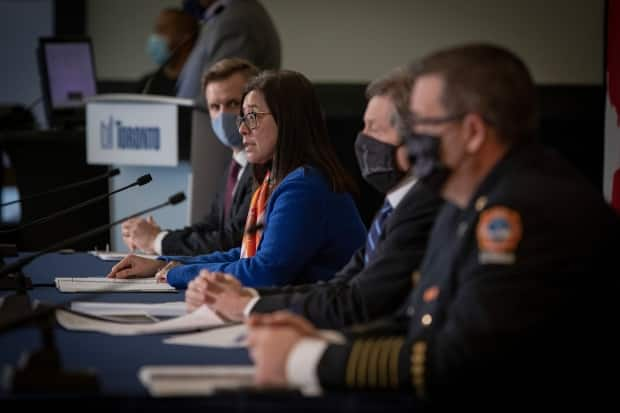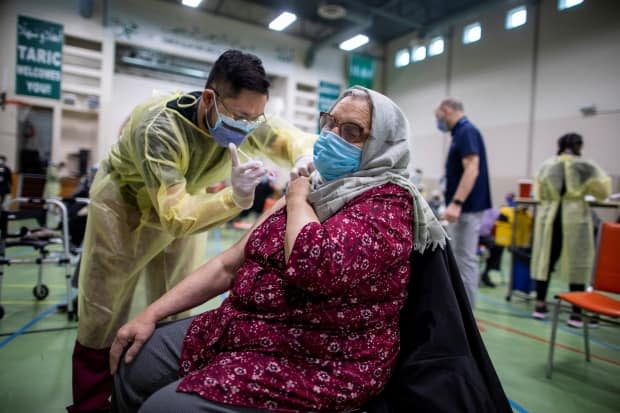Toronto on track to see 2,500 new daily COVID-19 cases by end of April, new report says

As COVID-19 cases continue to surge, a new report from Toronto's medical officer of health predicts the city is currently on track to see 2,500 new daily cases of the virus by the end of April.
The stark projection is one of many in the report from Dr. Eileen de Villa, which was presented at the city's board of health meeting on Monday. You can read it here.
"The variants have changed the game," board of health chair Coun. Joe Cressy said on Twitter.
"Modelling suggests that Toronto may be on track to see an average of 2,500 cases per day by the end of April."
Cressy's office clarified that number is contingent on transmission rates staying at current levels.
De Villa reported 1,296 new cases in Toronto on Monday. There are 632 people with COVID-19 in hospital, with 108 of them in intensive care units. Fifty people are on ventilators.
De Villa reported five more deaths, a number that brings the city's COVID-19-related death toll to 2,867.
"These numbers speak for themselves today," de Villa told reporters at a city hall news briefing.
"I will only add that when the Hospital for Sick Children is providing ICU care to adults, you know you're living through one of the worst periods of the pandemic."
Case counts in the city and the province have surged due to variants of concern (VOCs), something experts had been predicting for weeks. According to de Villa's report, infections due to VOC's were associated with a 91 per cent relative increase in COVID-19 deaths, and a 36 per cent relative increase in hospitalizations.
The report also hammers home points that local officials have been trumpeting for months now: that the pandemic is disproportionately affecting marginalized and lower income demographics.
According to de Villa, a total of 76 per cent of the city's cases as of Feb. 28 were found in racialized people.

Latin American populations have the highest monthly reported case rates and the highest hospitalization rate, the report says. In February, Arab, Middle Eastern and West Asian populations had the second-highest reported case rate, followed by Southeast Asian people and South Asian people.
After adjusting for age, the hospitalization rate in lower income populations was three times as high as the rate in those who were not low income, the report states.
Data released today in the report shows vaccinations have been moving steadily upward, with 590,543 people having received at least one dose as of April 8. The percentage of Toronto residents who have received at least one dose of vaccine is listed at 15.8 per cent.
De Villa's report also echoes data analysis from the Institute for Clinical Evaluative Sciences released last week, showing the city's hardest-hit neighbourhoods have not been getting COVID-19 vaccines at the same rate as higher-income areas that have seen much lower rates of the virus.
De Villa says Toronto's northwest neighbourhoods have among the lowest vaccination rates in the city, yet continue to have the highest incidence rates of the virus.
The medical officer of health is now recommending that the board of health request that the city and the province increase Toronto's vaccine supply, and prioritize registration in hot-spot areas.

 Yahoo Movies
Yahoo Movies 